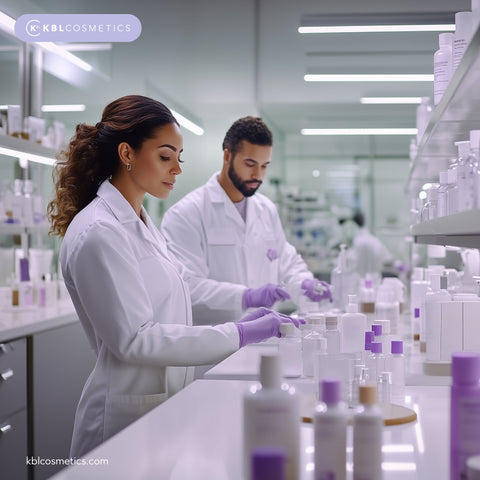Thermal stability refers to a formulation’s ability to maintain its structure, chemical composition, and physical properties when exposed to elevated temperatures. This includes maintaining an oil in water emulsion without liquid syneresis, preventing thermal decomposition of cosmetic actives like vitamin E and UV filter compounds, and avoiding chemical changes such as oxidation of carbonyl group-bearing ingredients. It is essential that cosmetic product designers consider thermal stress during the formulation process to ensure product quality in all climatic zones.
Why stability testing and stability studies are crucial
Stability test procedures include real-time stability evaluation, accelerated stability testing, and long-term stability testing. Accelerated aging tests and accelerated stability evaluation often use temperature stress testing in a double boiler, thermal cycling, or climatic chamber to simulate aging. Real-time testing helps determine product shelf life and expiry date. Open packaging stability tests and period after opening (PAO) assessments are important to know how cosmetic compositions perform once in consumer hands. These shelf life test methods comply with regulations for cosmetic product labelling, such as the PAO symbol and minimum durability guidelines.
Full compatibility testing and microbial tests
Comprehensive compatibility test procedures include:
- Centrifuge testing to check phase separation
- Physico–chemical properties measurements
- Sensory test for texture, odor, and color changes
- Microbial challenge testing and microbial tests using a microbial test kit
- Spectroscopic analyses with spectroscopic techniques for structural integrity
These stability studies ensure that packaging material does not interact with the formulation and that cosmetic materials like ionic emulsifier or chelating agent remain stable throughout production stages.
Key chemical and physical factors
Thermal stability also involves understanding melting point, thermal decomposition, and reactions induced by atmospheric oxygen. Heat stability is tested to prevent chemical reactions that degrade vegetable oils, hydrolyzed jojoba ester, or caprylyl glycol. Mechanical stress testing simulates distribution stresses, and chemically unstable compounds must be monitored throughout development and usage.
Implications for different product types
Different formats such as lip balms, body mist, skin cosmetics, or complex cosmetic compositions require tailored stability protocols. Oil in water emulsions need rigorous evaluation to maintain clarity and texture. Cosmetic manufacturing must verify that UV filter performance persists and no physical changes occur in final packaging. Shelf life granted depends on combining accelerated stability testing with real-time testing and microbial tests to ensure that product quality is robust.
Regulatory considerations and quality assurance
Certifications ensure any chemical changes or physical changes are documented. Stability evaluation helps determine usage period, and the production process is audited to verify each batch is batch tested and meets requirements. This includes the use of cosmetic actives, base formulae, and thickening ingredients that can affect shelf life and performance. Proper consideration of packaging material and compatibility testing during the formulation process supports long-term product stability.
Conclusion and next steps
Thermal stability forms the backbone of a successful cosmetic product. By integrating accelerated aging tests, real-time stability testing, microbial challenge testing, compatibility testing, spectroscopic techniques, and mechanical stress testing, it is possible to confidently distribute the product with reliable product shelf life. For help with comprehensive shelf life test, open packaging stability tests or compatibility test services, please contact us.
